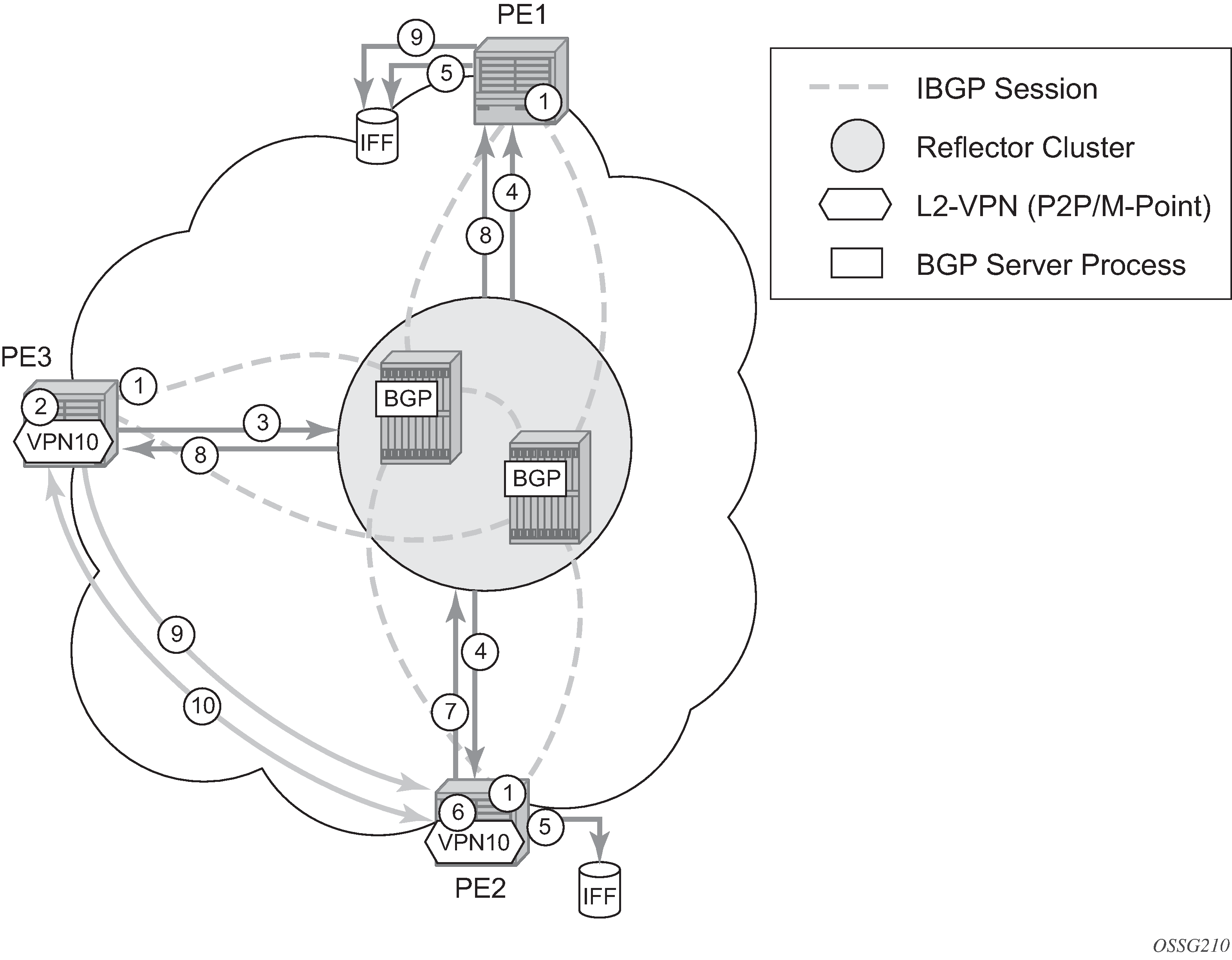BGP is responsible for discovering the location of VSIs that share the same VPLS membership. LDP protocol is responsible for setting up the pseudowire infrastructure between the related VSIs by exchanging service-specific labels between them.
After the local VPLS information is provisioned in the local PE, the related PEs participating in the same VPLS are identified through BGP AD exchanges. A list of far-end PEs is generated and triggers the creation, if required, of the necessary T-LDP sessions to these PEs and the exchange of the service-specific VPN labels. The steps for the BGP AD discovery process and LDP session establishment and label exchange are shown in Figure: BGP-AD and T-LDP interaction.

The following corresponds with the actions in Figure: BGP-AD and T-LDP interaction:
Establish IBGP connectivity RR.
Configure VPN (10) on edge node (PE3).
Announce VPN to RR using BGP-AD.
Send membership update to each client of the cluster.
LDP exchange or inbound FEC filtering (IFF) of non-match or VPLS down.
Configure VPN (10) on edge node (PE2).
Announce VPN to RR using BGP-AD.
Send membership update to each client of the cluster.
LDP exchange or inbound FEC filtering (IFF) of non-match or VPLS down.
Complete LDP bidirectional pseudowire establishment FEC 129.